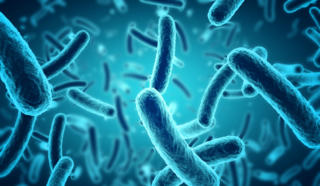Better, faster typing of Salmonella strains
Posted on September 26, 2012 by Lena Ciric, University College London
A new method for classifying Salmonella strains has been developed by scientists, giving faster turnaround times and greater reliability. Salmonella strains are notoriously difficult to identify, or type; however new research suggests that looking at the sequence differences in three genes, present in all Salmonella strains, results in more accurate, faster discrimination. This may potentially lead to faster identification of outbreak sources by clinical laboratories and public health agencies.
The research is published in the Journal of Medical Microbiology this month.

Salmonella can cause disease, salmonellosis, which is caused by eating contaminated food. Symptoms include diarrhoea, fever, vomiting, and abdominal cramps, and usually last several days. Most people recover without treatment or complications, however, in rare cases the patient can become severely dehydrated and the infection can spread to the bloodstream. In England and Wales rates of salmonellosis have declined over the last decade, although there are still around 9,000 laboratory-confirmed cases each year.
As Salmonella strains are very similar, a number of methods are currently used to distinguish between outbreak strains. The methods generally focus on the physiological characteristics of the organisms’ flagella and cell wall. However, further tests are often needed which examine the expression of bacterial genes. These tests take time and results can be affected by storage and growth conditions. Furthermore, important genetic differences between strains that affect their potential to cause disease can be missed.
In the new study, scientists describe a high-throughput DNA-based approach to Samonella serotyping. They characterised 224 Samonella strains, including reference strains, medically relevant strains and 18 strains deemed non-typeable by traditional methods. The sequences of 14 gene targets in each strain were separated according to their varying molecular masses. The results showed that looking at just three of the fourteen genes was enough to distinguish all known serotypes, including those considered non-typeable.
As well as being quick and easy to perform, the sequence-based method is much more reliable than previous approaches to typing. This new method has the potential to replace the more labour-intensive traditional approaches, making it quicker to identify disease-causing strains of Salmonella and the source of future outbreaks.
